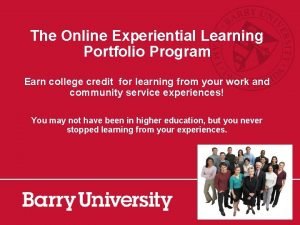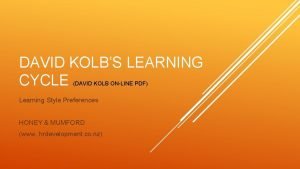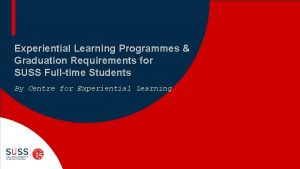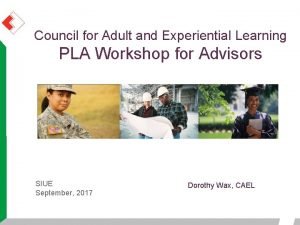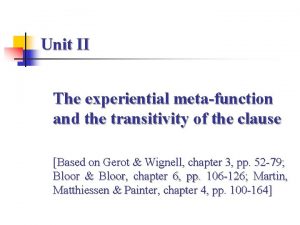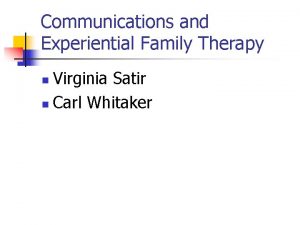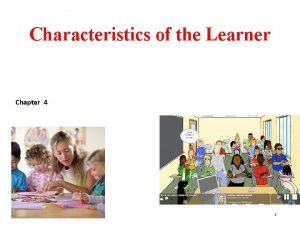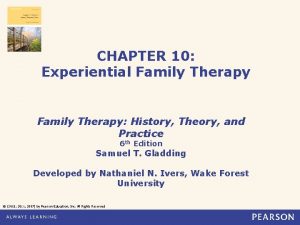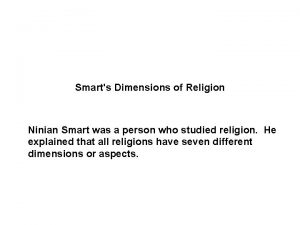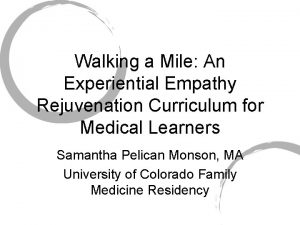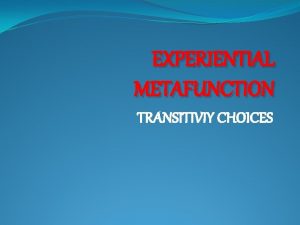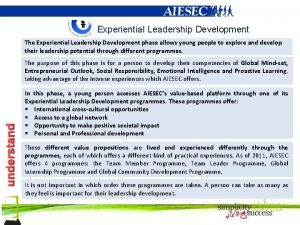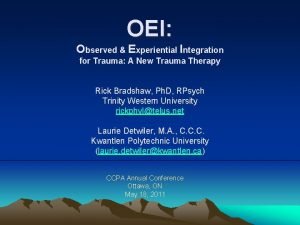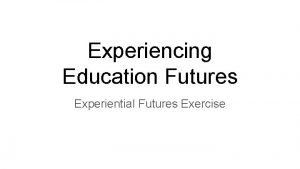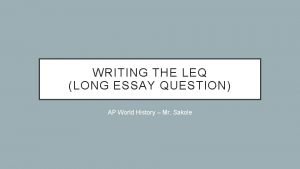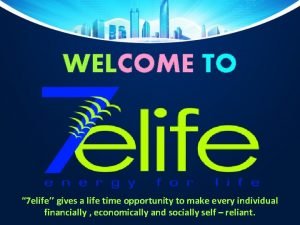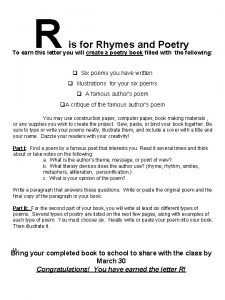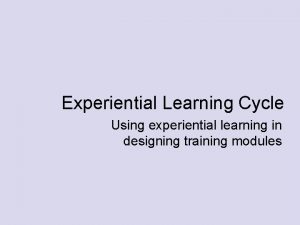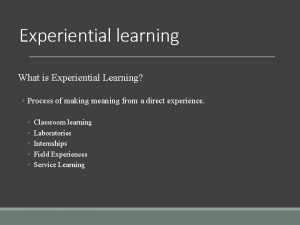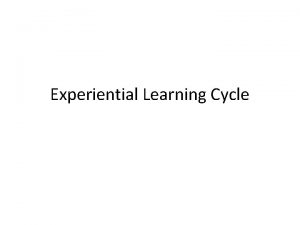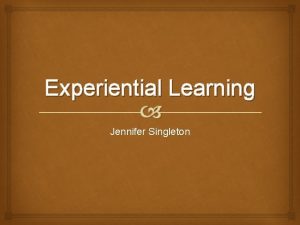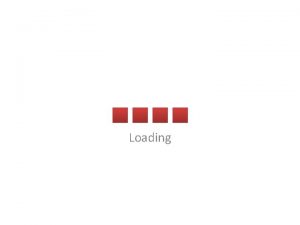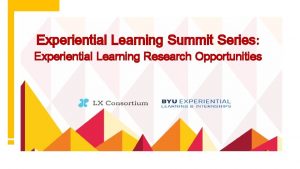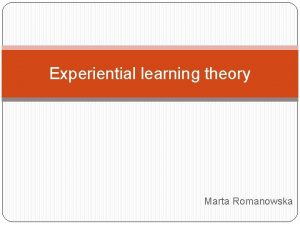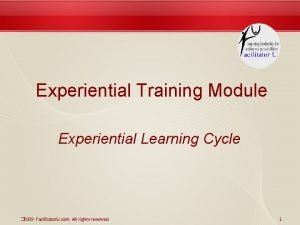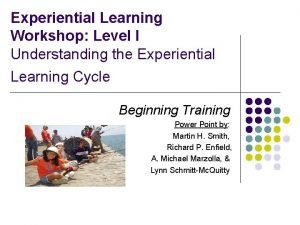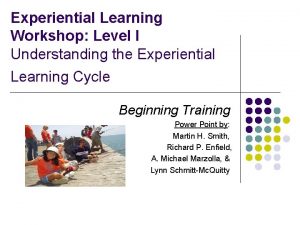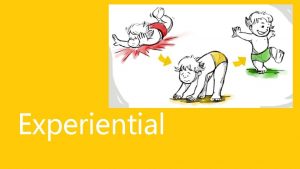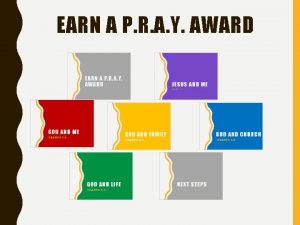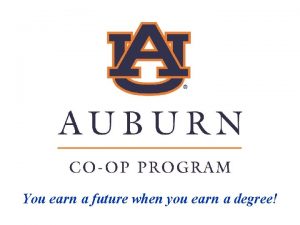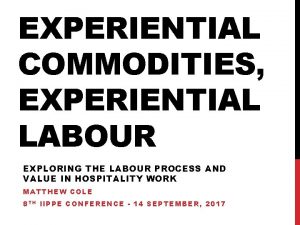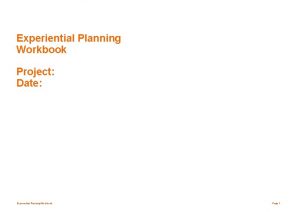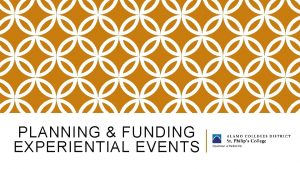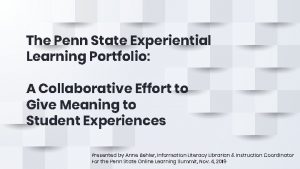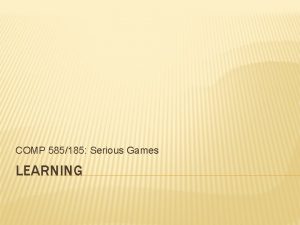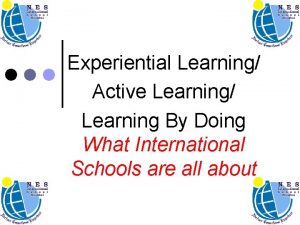The Online Experiential Learning Portfolio Program Earn college
























- Slides: 24

The Online Experiential Learning Portfolio Program Earn college credit for learning from your work and community service experiences! You may not have been in higher education, but you never stopped learning from your experiences.

Experiential Learning and Assessment Barry university is a leader in § the assessment of experiential learning § equating adult learning experiences to academic disciplines 2

What is Experiential Learning? § learning acquired outside of traditional classroom settings § learning through reflective thinking on professional/personal experiences § learning by doing 3

What is an Experiential Learning Portfolio (ELP)? § It demonstrates how prior learning beyond the classroom can be equated to academic disciplines. § It is used by thousands of colleges and universities around the world to save students time and money toward degree completion. § It is submitted online in the Canvas Learning Management System. 4

Why Complete an ELP through Prior Learning Assessment (PLA)? Adults who earn ELP credit have better graduation rates (CAEL Research Study, 2010) Barry Completion Comparison 100% 11% 80% 60% No Degree Earned 77% 89% 40% 20% 0% Bachelor's 23% Non-PLA Students Only 23% of non-ELP students completed a degree vs. 89% of the ELP students. 5

What can the Portfolio do for you? q Reduces time to degree completion - Earn up to 30 credits from your portfolio (the equivalent of one year of college courses) “It really made me stop and think. It reinforced my belief in myself. I tend to get so caught up in everyday situations that I forget that I ever did something, you know, fifteen years ago. I think the portfolio is one of the most rewarding pieces of work that I have ever done. ” (student testimonial) 6

What can the Portfolio do for you? cont’d q Saves thousands on tuition costs “Received excellent support from the Barry staff in completion of my portfolio. The Barry Team was there for me every step of way. The portfolio development gave me an opportunity to access the value and apply the knowledge of my learning experiences over time…”(student testimonial) 7

What can the Portfolio do for you? cont’d q allows for a richer, self-reflective, student-centered approach to learning q serves as your Lifelong Learning and Professional Development Tool q is a comprehensive record of your skills and experience q is great for job interviews, career advancement, and a roadmap of your future goals “…It has actually opened my eyes on what I have really accomplished and motivated me to keep moving. I am proud to say that thanks to this, I was promoted at work. ” (student testimonial) 8

What can the Portfolio do for you? cont’d Your completed portfolio can also serve as: qa documented lifetime of accomplishments for current and future employers qa treasured historical family document 9

How Do I Start the Portfolio Process? q Contact your advisor who will enter you into Canvas where you’ll find the tools you need to get started. These tools include § the directions for each part of the portfolio § a sample portfolio to use as a guide 10

Portfolio Development Process q Take advantage of the online course syllabus which has § each section broken into manageable parts § hands-on directives through the development process “…the process has been perfected throughout the years, because I found it to be easy to follow with all the materials provided, especially the templates. This has been a wonderful experience in which I thought provided me the opportunity to recap my work & life experiences and be able to share them with my children who were utterly impressed. ” (student testimonial) 11

Portfolio Development Process cont’d q Receive guidance throughout the entire process from your academic advisor “… My advisor was with me every step of the way. That made me feel So much better about the entire experience. Additionally, I believe I delivered a better product as a result of all the guidance & support. ”(student testimonial) 12

Portfolio Development Process cont’d q Complete the 5 main sections of the portfolio. Each section is designed to support the previous section: 1. Introduction 2. Experiential Learning Resume 3. Learning Assessment Worksheet 4. Autobiographical Learning Essay 5. Documentation 13

1 - Introduction Consists of the required forms and the goal statement 1) Portfolio Verification form: portfolio development authentication 2) Portfolio Completion Checklist: tool to ensure areas are completed 3) The Unofficial Transcript/Term Printout: your educational degree program summary 4) The Goal Statement: short essay connecting experiential learning, degree program, and professional/personal goals 14

2 - Experiential Learning Resume (ELR) Identifies the major experiences that led to your learning Two areas and six categories 1) Credit award area Professional work experience Professional organizations/activities Community activities 2) Credit Support area Education and training Professional licenses Awards and honors 15

3 - Learning Assessment Worksheet (LAW) q An analysis of the positions listed in the resume q Demonstrates what and how you have learned from your experiences § Identifies experiences for each listed position/activity § Separates experiences from learning § Matches experiences to specific learning/competencies § Relates learning to academic disciplines § Serves as an outline for your essay 16

4 - Autobiographical Learning Essay (ALE) For successful development of the ALE, you will: q Articulate, in essay form, what you do/did, your learning experience components (LECs) and the college-level learning that occurred, the competencies, you already developed in the LAW. q Use Dr. David Kolb’s Model of Learning and Bloom’s Taxonomy to help you transform your experiences to learning: q analyze, reflect on, and write about your concrete experiences q explain how you applied your learning in other situations q Equate your experiential learning to academic disciplines - discipline designation will be included in the transcription of portfolio credits. q Receive editing and proofreading assistance from the Writing Lab, On -line Writing Lab (OWL) or your ENG site tutor. 17

5 - Documentation q The Documentation § provides the faculty evaluator with tangible evidence that you know what you say you know. § helps you support and validate your learning listed in the Resume and described in the LAW. § helps you enhance your descriptive expression in the ALE. q Documentation characteristics § Verification: describes responsibilities and confirms competencies § Measurable: describes breadth and depth of responsibilities and competencies § Reliability: signed and on letterhead or with notarization § Completeness: includes all positions, activities, titles, and dates § Consistency: matches positions, activities, titles, and dates 18

Frequently Asked Questions (FAQs) Question: How many credits will I receive? Answer: No-one can predict the number of credits you will receive until the portfolio is evaluated. Students can earn up to 30 credits maximum; however, the actual amount of credits earned is approved and granted by the Portfolio Committee based on the Faculty Evaluator’s findings. Question: I missed the last deadline for submission, and I need an exception made so I can graduate early. Whom do I contact to ask for this? Answer: Exceptions are only granted for serious personal or family illnesses and will also be considered if the student is moving out of Florida. 19

FAQs cont’d Question: Why won’t I get credit if I was a stay-at-home Mom? Answer: Not all of our learning represents college-level learning. “Learning must be measurable, non-routine, more than what everyone gains from everyday experiences. ” In order for your learning to qualify for credit it would have to have been supplemented through reading/research/application by parlaying that learning through an activity outside the home. You could present this type of learning if you were involved in a child daycare center or as a classroom teacher’s assistant whereby valid, reliable documentation could be obtained from an outside source. Question: Can I only use job experience that is in the same field as my degree? Answer: Barry University’s Experiential Learning Portfolio is competency based not course based. In other words, you may receive college credit for all properly documented post-high school learning that has occurred as a result of your Professional Positions, Community Activities, and memberships in Professional Organizations and Activities. This learning can be in any discipline that is offered: General Administration, Behavioral Sciences, Communication, Humanities, Natural Sciences, Social Sciences, and five Special Topics Computer Sciences, Education, Emergency Management, Legal Studies, and Public Administration. 20

FAQs cont’d Question: I don’t understand the upper and lower level credits. How does this work and how do I get the maximum upper level credits? Answer: Learning that is indicated by only a basic knowledge and comprehension reflects lower level learning (this is equivalent to 100/200 level classroom courses). To reflect upper level learning you must show that the knowledge can be applied, analyzed, synthesized and/or evaluated (this is equivalent to 300/400 level classroom courses). Question: Where do the Portfolio credits apply? Can I use the credits for distribution classes or classes in my specialization? Answer: Credits earned from the Experiential Learning Portfolio may be used as general elective credits and help you to reach your 120 minimum total credit requirement as well as the 48 upper level credit requirement. Credits earned from the Portfolio cannot be applied to the General Distribution requirements or to any of the core classes required in the major, however, you may be able to apply six upper level portfolio credits to the specialization electives and additional major requirements. Please check your particular Student Bulletin or ask your advisor to review how the Portfolio can best help you complete your degree requirements. 21

FAQs cont’d Question: How do I determine which competency best explains my job duties and how do I intertwine them in my autobiographical essay? Answer: As found in the Portfolio handbook for St. Mary’s College of California, a competence “is the knowledge or learned ability to do something skillfully. ” You should determine the best match between what you did (learning experience components such as “wrote a policy and procedure manual), and with what you learned or competency gained from that experience (such as “communication, critical thinking and investigation and research skills). To match competencies to learning experience components, refer to the positions listed in column three of the LAW worksheet and the ideas generated in the brainstorming and clustering exercises found in Module 4 The function of the Autobiographical Learning Essay is to demonstrate the college-level learning and that requires the incorporation of the competencies. Competencies should be presented as the topic sentences and supported through the use of concrete examples demonstrating and connecting the “what you learned” with the “what you did. ” A sample paragraph and other helpful information can be found in Module 5 in Canvas. 22

FAQs cont’d Question: Can I use my performance appraisal material as supporting documentation? Answer: You can use signed performance appraisal material as supporting documentation but keep in mind the absolute necessity to properly and completely document the experiential learning to ensure the faculty evaluator has tangible evidence that supports what you say. All primary official documentation must have organization letterhead/logo, describe your position or activity and should include accurate dates in month/year format. Question: I work for the state and have had many jobs over many years. How do I document this? Answer: You can obtain a print out from the Human Resources department indicating all positions held with corresponding dates of employment. You should also include recent primary documentation from current supervisors and performance appraisals. Question: What if I can’t get a letter? What are my documentation alternatives? Answer: If a previous employer is no longer available to secure proper documentation, you have alternatives. You may be able to contact previous supervisors or managers, utilize past tax documents, or request the Social Security Itemized Statement of Earnings. 23

Let’s get started! Contact your academic advisor. EXPERIENCE – YOU’VE LEARNED IT CREDIT – YOU’VE EARNED IT!
 Experiential learning portfolio
Experiential learning portfolio Kolb learning cycle pdf
Kolb learning cycle pdf Suss overseas experiential learning
Suss overseas experiential learning Council for adult and experiential learning
Council for adult and experiential learning Asd college college readiness program
Asd college college readiness program Experiential function
Experiential function Experiential avoidance
Experiential avoidance Satir experiential family therapy
Satir experiential family therapy Peek readiness to learn
Peek readiness to learn Conjoint family drawing
Conjoint family drawing Experiential dimension of christianity
Experiential dimension of christianity Experiential empathy
Experiential empathy Transitiviy
Transitiviy Experiential leadership training
Experiential leadership training Observed experiential integration
Observed experiential integration Experiential futures
Experiential futures What is a portfolio
What is a portfolio Cuadro comparativo de e-learning
Cuadro comparativo de e-learning Music music music
Music music music Online portfolio selection
Online portfolio selection How to write an leq
How to write an leq What is 7elife
What is 7elife How much does wanda earn per hour?
How much does wanda earn per hour? Earn rhymes
Earn rhymes Rain 3 hali
Rain 3 hali
